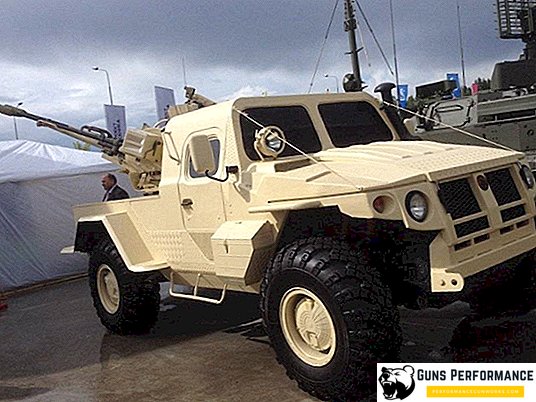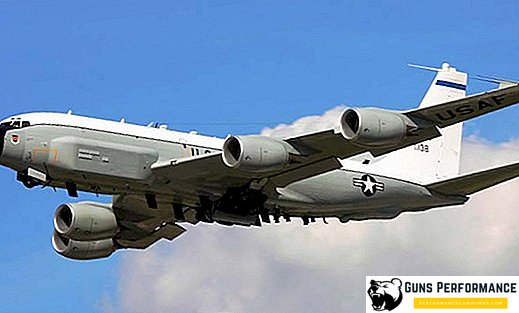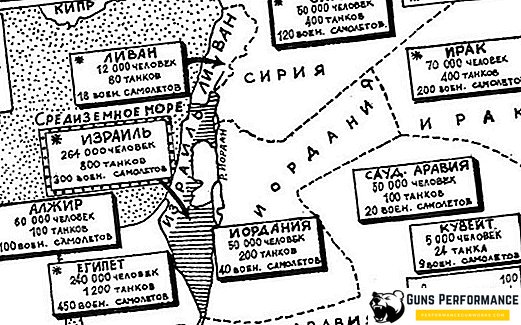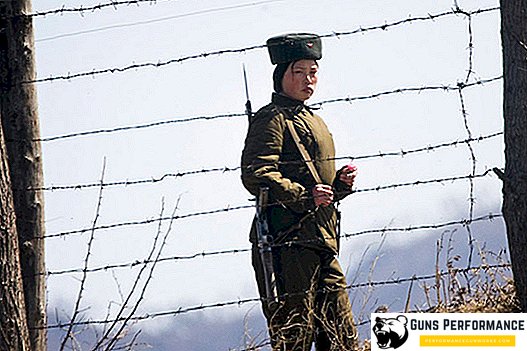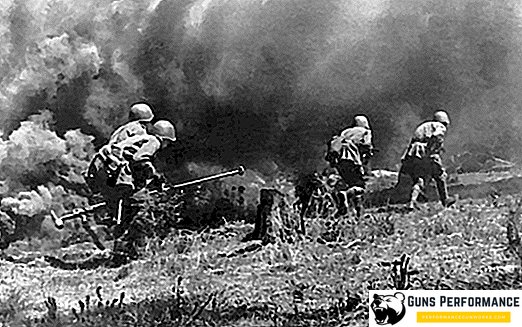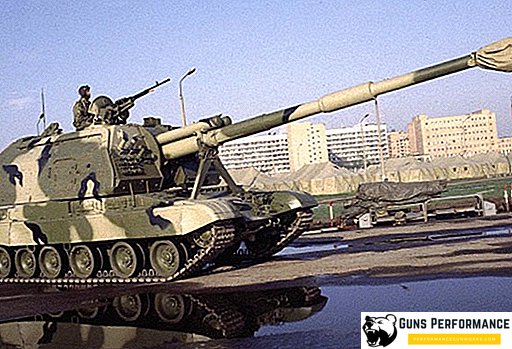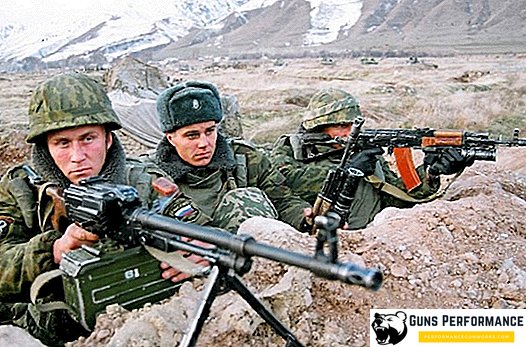
Motorized rifle troops (MRV) is a branch of the land forces, which is an infantry equipped with means of transportation and fire support. In our time, motorized rifle troops are the basis of most armies in the world. Their main task is to conduct large-scale ground operations, both independently and in coordination with other branches of the military. In the West, MSV is often called "mechanized infantry".
Motorized riflemen can fight in any terrain, day or night, and in any weather, on foot or on their combat vehicles. The main advantages of the MRV is their mobility, maneuverability and great versatility.
The rifle units include artillery, tank and anti-aircraft units, as well as a number of special military units (for example, engineering units, chemical and radiation protection units). Modern infantry armed with tactical missile systems capable of using nuclear weapons.
In the Russian modern history motorized rifle troops have repeatedly taken part in hostilities. In particular, the 201st Motorized Rifle Division of the Combat Army of the Russian Federation fought on the side of the legitimate government of Tajikistan in the civil conflict of the early 1990s. Russian motorized infantry engaged in the protection of the state border of this country. On the shoulders of motorized infantry fell the brunt of both Chechen campaigns. Russian motorized rifle troops also participated in the 2008 war with Georgia.
The day of the motorized rifle troops of the Russian Federation is celebrated on August 19. The unofficial flag of the motorized rifle troops is a black cloth with crossed Kalashnikov rifles framed by laurel wreaths. The emblem is complemented by two St. George ribbons and the MSV motto: "Mobility and maneuverability." The flag of the motorized rifle troops completely repeats the armband of the motorized infantry.

MSV is a modern incarnation of infantry, the most ancient branch of the military, on whose shoulders for centuries the main burden of war lay. The hoplites, the Roman legionaries, the landsknehts, the “gray-wheeled scum” of the First World War — they were always the backbone of any army, for the war ends exactly at the turn, on which the foot of an infantryman will set foot.
From the history of motorized rifle troops
Mass use of cars began during the First World War. This greatly increased the mobility and maneuverability of the infantry. In 1916, a new era began - in Great Britain they created the first tanks. And at the end of the First World War, the British developed a transport tank, a prototype of a modern armored personnel carrier, on which infantry could move during combat.
After the end of the First World War, the advanced armies of the world took the path of mechanization and motorization. In addition to tanks and trucks, various types of armored personnel carriers, armored vehicles and tractors were developed.
In the USSR in 1939, a new type of division appeared - the motorized division. It was planned that the movement of the personnel of such units will occur with the help of vehicles. However, the Soviet industry was not yet ready to provide the Red Army with a sufficient number of high-quality vehicles. During the war, the issue of the mobility of the ground connections of the Red Army was mainly solved by lendlyzovskoy technology - American armored personnel carriers and excellent trucks "Studebaker".
Great attention was paid to the motorization of the ground forces in Nazi Germany. The Germans carefully studied the experience of using motorized vehicles during the First World War and came to the conclusion that increasing the mobility of ground forces is one of the main components of success, both in the offensive and in defense. The large-scale motorization of the infantry made a significant contribution to the success of the new German concept of warfare - the blitzkrieg tactics.
The German tank divisions - the tip of the driving forces of the blitzkrieg - included several motorized rifle regiments armed with Sd.Kfz armored personnel carriers. 251 and having a significant number of vehicles.
Gradually, the usual German infantry divisions were saturated with armored personnel carriers and cars, after which they received the status of motorized and motor-grenadier.
Soviet motorized rifle brigades
The motorization and mechanization of the ground forces became one of the main lines of modernization of the Soviet army after the end of the war. Soviet generals recognized the need to increase the mobility of infantry formations. In June 1945, the State Defense Committee issued a decree on the manning of armored and mechanized formations of the Red Army. However, it was not until 1957 that the question of saturating the ground forces with vehicles and armored personnel carriers was fully resolved. As a result, it was 1958 that became the year when the Soviet motorized rifle troops appeared.
Soviet motorized infantry were the first in the world to adopt a new type of armored vehicles - infantry fighting vehicles. These universal vehicles could not only transport infantry, but also effectively support it in battle. The BMP-1 began to enter the combat units of the Soviet army in 1966. Later, the Soviet concept of using BMP was taken up by the majority of Western countries. It should be noted that almost all armored vehicles of the USSR motorized rifle troops could independently overcome water obstacles and were well protected from weapons of mass destruction.

In the USSR, motorized rifle troops were the most numerous in the armed forces, it can be said that the MTS became the basis of the Soviet army. In the late 80s, there were more than 150 motorized rifle divisions. In addition, each tank division included one or two motorized rifle regiments.
The typical Soviet motorized rifle division (MSD) of the late 80s consisted of three motorized rifle regiments, besides, it consisted of one tank, anti-aircraft and artillery regiment, rocket artillery division and anti-tank gun division. The MSD also included support units.
The motorized rifle regiments of the Soviet army were of two types: armed BTR or BMP. Usually, the MSD consisted of two regiments with an APC and one with an infantry combat vehicle. It should be noted that the regiments armed with infantry fighting vehicles were planned to be used in the first echelon of the attack.
There were also separate motorized rifle brigades armed exclusively with infantry fighting vehicles.
In the late 1980s, the air defense of the motorized rifle regiments was strengthened - the anti-aircraft battery was expanded to the division.
It should be noted that the USSR had deployed motorized rifle divisions only abroad (late 80s): in Afghanistan, Germany, Eastern Europe. The composition of such MSD included from 10 to 15 thousand soldiers. In the USSR, the number of divisions was usually about 1,800 people.
The training of officers for the motorized rifle troops was carried out by several higher military educational institutions: Frunze and nine military military schools.

Russian motorized rifle troops
As in Soviet times, the motorized rifle troops of the Russian Federation are the basis of the ground forces of the modern army. Since 2000, they are gradually moving to the brigade principle of formation.
It is believed that the motorized rifle brigades (as compared with divisions) are a more flexible and versatile tool for solving various combat missions. According to Russian strategists, the brigade structure of the motorized rifle troops is more suited to the realities of the present. It is believed that the threats of a large-scale war are in the past, and for local conflicts brigades are much better suited than numerous and cumbersome divisions. Brigades can conduct combat operations in any terrain and climatic conditions, using both conventional weapons and weapons of mass destruction.
In recent years, they have increasingly talked about a partial return to the divisional structure of the motorized rifle troops. The Tamansk division has already been reconstructed, motorized rifle divisions will appear in the Far East, in Tajikistan and in the western part of the country.

Motorized rifle battalion
The motorized rifle battalion (SMB) is the main combined-arms tactical unit in the UTC. Its staff has remained almost unchanged since Soviet times — in the Russian army, changes affected units of a higher order — divisions were replaced by brigades united into districts.
The composition of the SME includes three motorized rifle companies, one mortar battery, as well as three platoons: anti-tank, grenade launcher and anti-aircraft missile. In addition, SMEs include support units (communications platoon, medical center).
The composition of the motorized rifle battalion on the BTR includes 539 troops, 43 armored personnel carriers, 42 units of vehicles, three Cornflower mortars, six 82 mm mortars, six ATGM 9K111 Fagot and nine ATGM 9K115 Metis.
The composition of the infantry battalion on the BMP includes 462 military personnel, 39 units of BMP-2 (including 2 BMP-2K), 42 cars, three automatic mortars "Cornflower", six 82 mm mortars, six AGS-17 heavy-duty grenade launchers.



